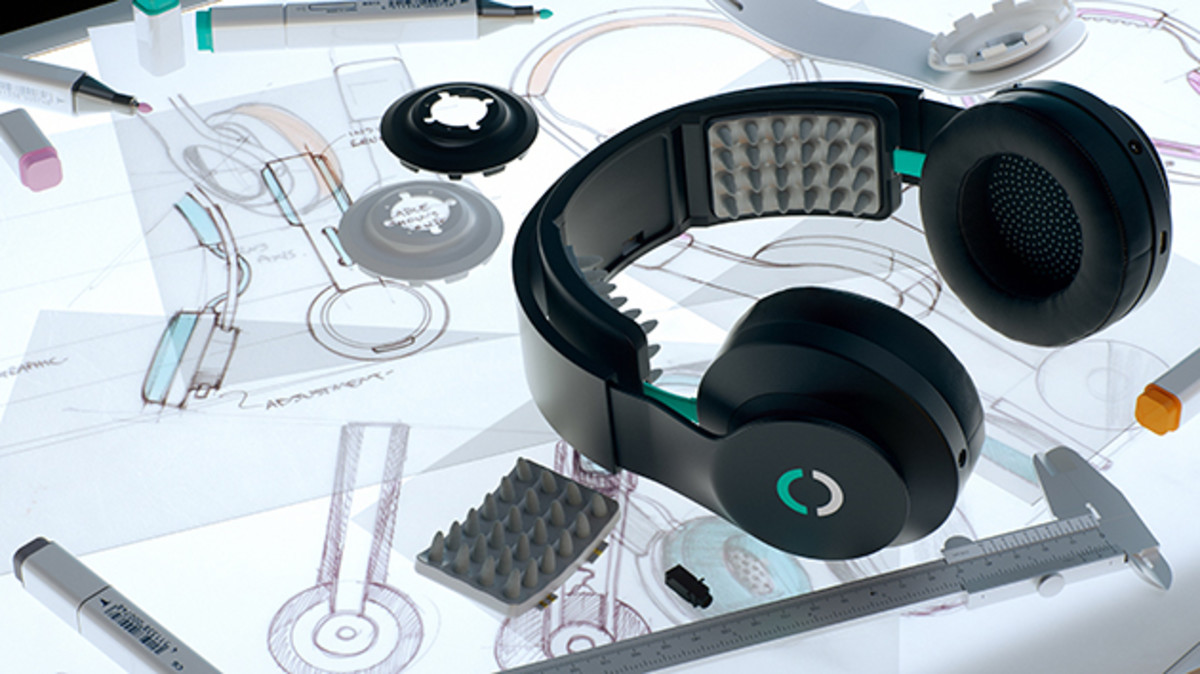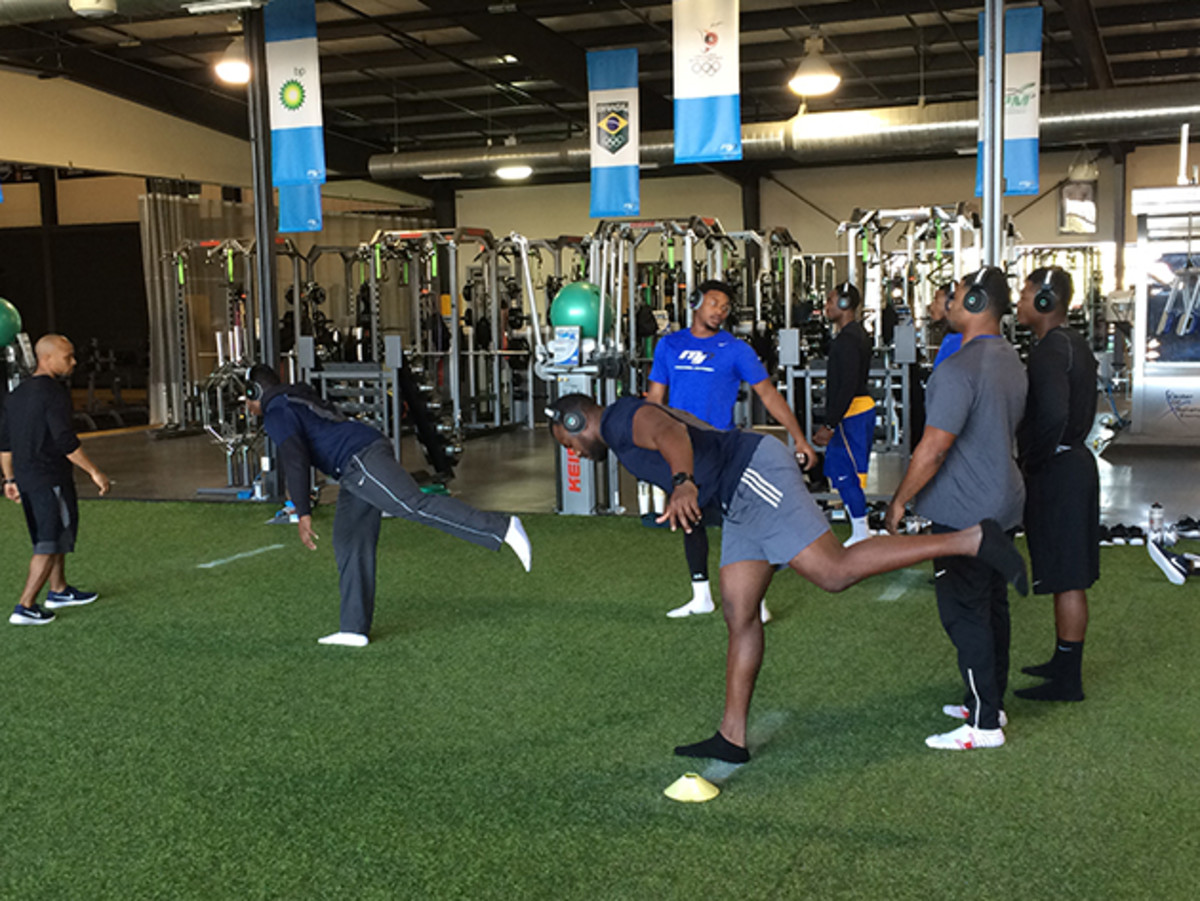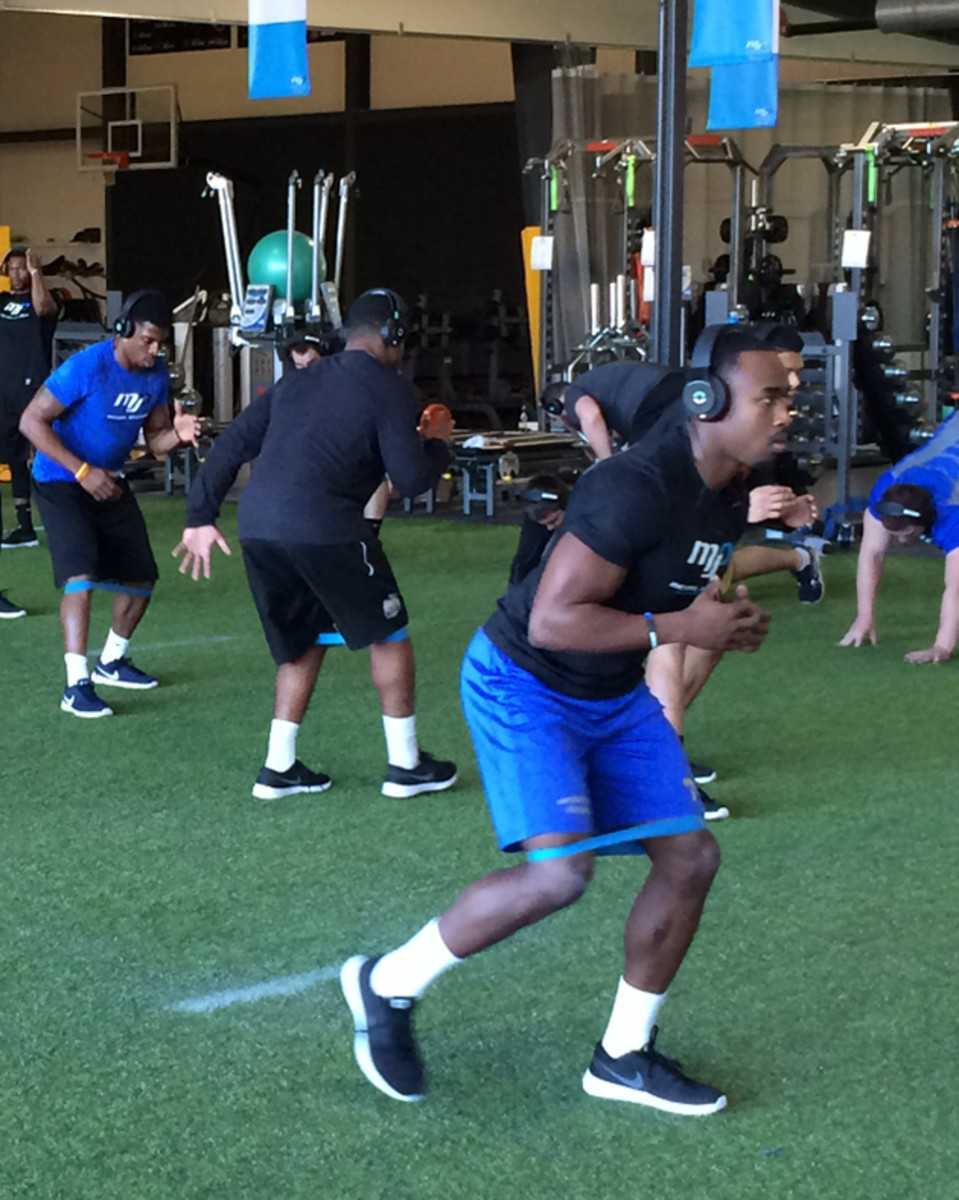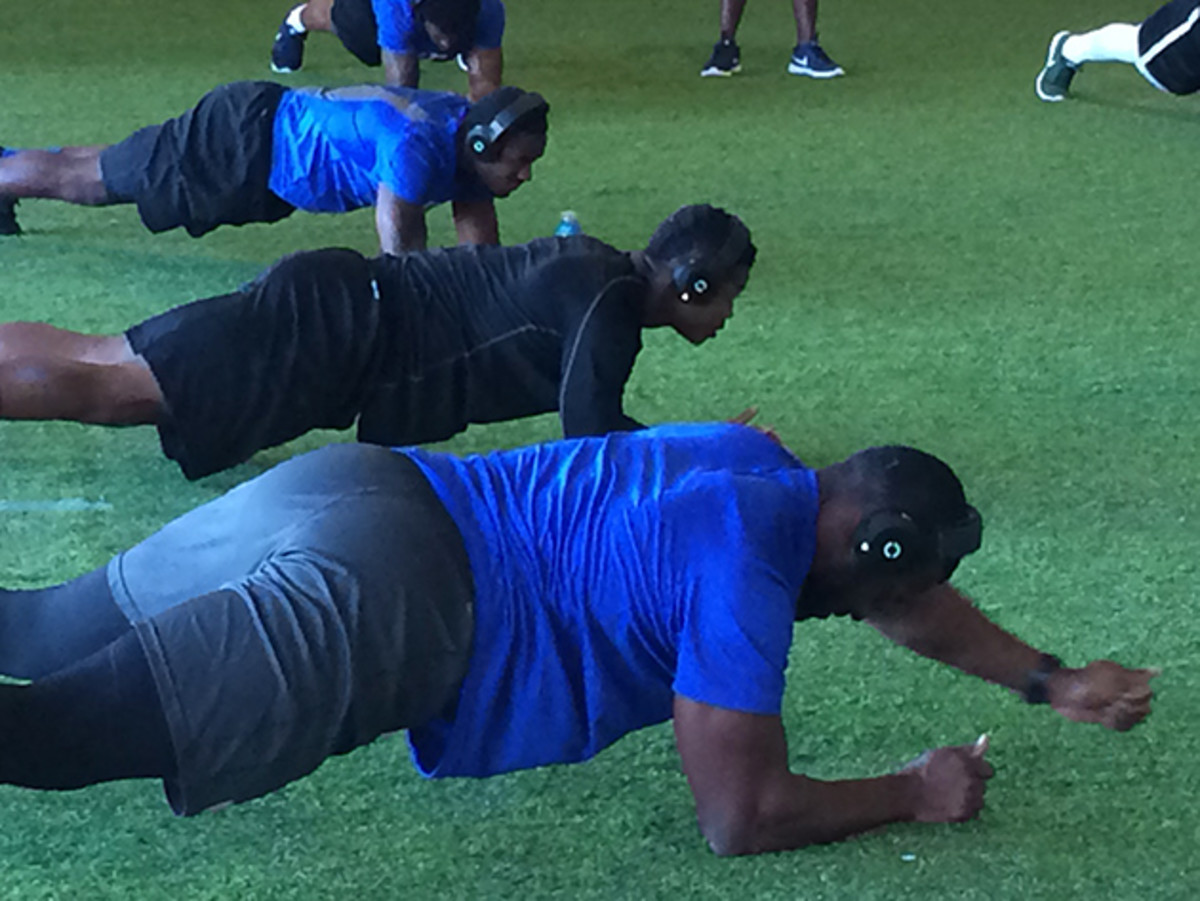Can electrical brain stimulation boost athletic performance?

When Kieren Duncan showed up at EXOS’s high performance training center in Phoenix in early January, he was looking to tune up his body, not re-wire his brain. Then, three weeks before the NFL’s Arizona Regional Combine, trainers handed the Colorado State University-Pueblo wide receiver a headset.
On the outside, the headset looks like a regular pair of noise-cancelling headphones, but this particular one isn’t manufactured by Bose, Sony or another common brand—it’s made by Halo Neuroscience. On the inside of the wide headband, above each ear pad, are rows of soft plastic teeth. Infused with a conductive saline solution, the teeth can transmit electrical pulses through the skull to the motor cortex, the region of the brain that controls movement. The electrical stimulation increases the ability of neurons in that region to build new connections, which is essentially how the brain learns new abilities.

“I’m kind of a nerd and into science fiction,” Duncan says, “so the idea of it sounded really cool to me.”
But not everyone was quite as excited to try the headset. Lance Walker, director of performance at Michael Johnson Performance, a training center in McKinney, Tx., showed an early prototype to his athletes last year. “They kind of thought I was nuts,” he says.
Training with Jayron Kearse: Clemson safety takes workouts to the beach
Among the 23 players who trained with Walker ahead of the Combine, and who used Halo Sport, were Kansas State offensive guard Cody Whitehair, Notre Dame center Nick Martin, and Louisiana Tech running back Kenneth Dixon. Whitehair’s 7.32-second three-cone drill ranked him third among offensive linemen in Indianapolis, and Dixon ranked top four for running backs in three different workouts: the vertical jump, three-cone drill and 60-yard shuttle. All three are projected second round picks.
“Most people don’t think the brain has anything to do with strength,” says Daniel Chao, a Stanford-trained medical doctor and co-founder of Halo Neuroscience. “But how strong you are is as neurologically governed as it is governed by the strength of your muscles.”

Electrical brain stimulation might be new to sport but is used to treat many different medical conditions, including chronic pain, Parkinson’s, and epilepsy—Chao’s first foray into this space was a company called NeuroPace that builds neurostimulators designed to prevent epileptic seizures.
Athletes wear the device during warm-up routines, inducing a plastic brain state that lasts about an hour into their workout. When an athlete performs an exercise in that state, the brain more easily builds connections between the motor cortex and the muscles involved in that exercise. Better connections improve control and the ability to recruit more muscle fibers at the same time, extracting more of the raw strength from a muscle.
• MORE EDGE: The link between genetic testing and NFL talent ID
When Walker first trialed the device on 10 college athletes over five weeks last summer, they increased their performance in explosive tests such as squat jumps by an average of 12%.

“We saw these phasic spikes in and around the stimulus packages,” Walker says. And when Halo Neuroscience worked with U.S. ski jumpers over a 10-day period last fall, athletes using the device showed an average increase in jump force of 31%, 1.7 times more than others who trained without it.
Halo Sport can be a little uncomfortable to use at first, producing an itchy, burning sensation on the scalp when the power is turned on. But Duncan is sure it accelerated his progress at EXOS. He ran a personal record 4.32 seconds in the 40-yard dash at the Regional Combine, which would have ranked second overall in Indianapolis, and dropped that to a 4.29 at his pro day in late March. Though CSU-Pueblo is a Division-II program, Duncan is hoping those numbers convince NFL teams to give him a shot at the big time.
The SI Extra Newsletter Get the best of Sports Illustrated delivered right to your inbox
Subscribe

According to Walker, the decision to start using Halo Sport was easy. “It’s very, very safe, it’s very, very effective and efficient, it’s not a banned substance in any way, shape, or form, and the athletes are better and potentially healthier for it,” he says.
But is leveraging this sort of technology fair, especially considering Halo Sport isn’t yet available to consumers, including most of the prospects who have been trying to court pro teams? “No, it wasn’t fair at the NFL Combine,” Walker says, happy that his athletes may have had a brain-boosting edge. “I’m O.K. with that.”
